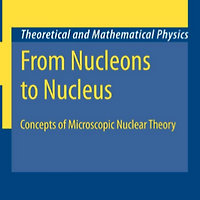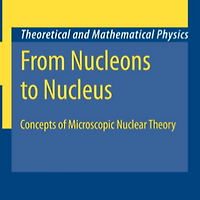The selection rules for electromagnetic transitions are summarized in this blog posting.
1. The first selection rule: There are no E0 and M0 gamma transitions.
We have derived the electromagnetic tensor operator in the previous posting: https://djlab.tistory.com/20.
According to the given form, for $\lambda = 0$,
\begin{eqnarray} Q_{00} \propto Y_{0 0} (\Omega_j) = const., \ \ M_{00} \propto \nabla_j [Y_{0 0} (\Omega_j)] = 0. \end{eqnarray}
Since the constant cannot connect two different states, i.e., $\langle i | const. | j \rangle = const. \delta_{ij} $, there are no transitions. (For the moment, we do not consider internal conversion.)
2. For $\lambda$ pole
Electric $\lambda$-pole:
The electric tensor operator is proportional to
$$ Q_{\lambda \mu} \propto r^\lambda Y_{\lambda \mu}. $$
For the partiy operator $({\pmb r} \rightarrow {- \pmb r})$, $r^\lambda Y_{\lambda \mu} \rightarrow (-1)^\lambda r^{\lambda} Y_{\lambda \mu} $. Note that the scalar part of $r^\lambda$ does not change for the parity operation. Hence, electric $\lambda$-pole operator has a parity of $(-1)^\lambda$.
Magnetic $\lambda$-pole:
The magnetic tensor operator is proportional to
$$ M_{\lambda \mu} \propto \left[ a {\pmb l} + b \pmb{s} \right] \cdot \nabla (r^\lambda Y_{\lambda \mu}),$$
where $a$ and $b$ are constants. Since ${\pmb l}$ and ${\pmb s}$ are axial vectors, they are not changed under the parity inversion, i.e., their parity is +1. Besides, $\nabla$ has parity of -1, because $(\partial/\partial x, \partial/\partial y, \partial/ \partial z) \rightarrow ( -\partial/\partial x, -\partial/\partial y, -\partial/ \partial z) $. Therefore, the parity of magnetic $\lambda$-pole is $(-1)^\lambda (-1) = (-1)^{\lambda -1} .$
From both results, parity conservation yields
\begin{eqnarray} \pi_i \pi_f = \begin{cases} (-1)^\lambda \ \ \ \ \ \ {\rm for} \ {\rm E \lambda}, \\[12pt] (-1)^{\lambda - 1} \ \ \ {\rm for} \ {\rm M \lambda}. \end{cases} \end{eqnarray}
where $\pi_i$ and $\pi_f$ denote the parity of initial and final states, respectively.
By the parity conservation and triangular condition, we can obtain the following lowest multipolarities for gamma transitions:
| $\Delta J = |J_f - J_i|$ | 0 | 1 | 2 | 3 | 4 | 5 |
| $\pi_i \pi_f = -1$ | E1 | E1 | M2 | E3 | M4 | E5 |
| $\pi_i \pi_f = +1$ | M1 | M1 | E2 | M3 | E4 | M5 |
E2/M1 Mixing Ratio
The E2/M1 mixing ratio is given as
$$ \Delta(E2/M1) = \frac{(\xi_f \, J_f || Q_2 || \xi_i \, J_i)}{(\xi_f \, J_f | M_1 || \xi_i \, J_i) }. $$
whose unit is $e\,{\rm fm}^2/\mu_N /c$.
In experimental reports, the dimensionless quantity $\delta(E2/M1)$ is commonly used, which is
$$ \delta(E2/M1) = 0.835 E_\gamma [{\rm MeV}] \Delta (E2/M1) \left[ \frac{\rm e \ barn}{\mu_N /c} \right].$$
'Nuclear Physics > From Nucleons to Nucleus' 카테고리의 다른 글
| 6.1.4 Properties of the Radial Integrals (+Python code) (0) | 2024.03.31 |
|---|---|
| 6.1.3 Single-Particle Matrix Elements of the Multipole Operators (0) | 2024.03.28 |
| Derivation of Eq. (34) in Magnetic tensor operator (0) | 2024.03.20 |
| Electromagnetic Transition - Static Multipole Tensor Operator (0) | 2024.03.20 |
| Proof of useful relation for curl operators with spherical harmonics (0) | 2024.03.20 |

